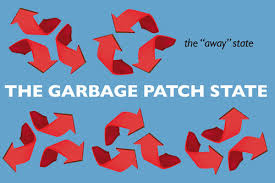Event
UNOG Library Talks : The Garbage Patch State

04 Jun 2015
16:00–17:30
Venue: UNOG Library Events Room B-135, Palais des Nations, Geneva
Organization: Geneva Environment Network
Refreshments served from 15:30 pm
Welcome Remarks
Charlotte WARAKAULLE, Director, UNOG Library
Introductory Remarks
H.E. Mr. Maurizio SERRA, Ambassador, Permanent Representative of Italy to the United Nations and other international organizations in Geneva
Speakers
Maria Cristina FINUCCI, Artist, The Garbage Patch State®
Gaetano LEONE, Coordinator, UNEP’s Barcelona Convention/Mediterranean Action Plan Secretariat
H.E. Mr. Jorge LOMÓNACO, Ambassador, Permanent Representative of Mexico to the United Nations and other international organizations in Geneva
Susan BROWN, Director, Global and Regional Policy, WWF International
Moderator
Sigrun HABERMANN, Chief, Strategic Planning, Programme Evaluation and Outreach Section, UNOG Library
Invitees not in possession of a UN badge should register on the UNOG website at www.unog.ch/librarytalks, bring a valid ID and a copy of this invitation on the day of the event to the Pregny Gate, located at 8 – 14 Avenue de la Paix, 1211 Geneva 10.
The Garbage Patch State®
The Garbage Patch State® is a nation invented by Italian artist Maria Cristina Finucci, who will be the key speaker at this UNOG Library Talk.
The Garbage Patch is one of the most serious forms of pollution caused by humankind. It is a territory that comprises five areas of man-made rubbish scattered in the North Pacific, South Pacific, North Atlantic, South Atlantic and Indian Ocean. The largest, discovered in 2009, called the Great Garbage Patch – also described as the Pacific Trash Vortex – is a gyre of marine debris in the central North Pacific Ocean.
Land-based sources – such as agricultural run-off, discharge of nutrients and pesticides and untreated sewage including plastics – account for approximately 80% of this debris. The Patch is characterized by exceptionally high concentrations of pelagic plastics, chemical sludge and other debris that have been trapped by the currents. As a result of photo-degradation, the garbage gets broken down into ever smaller pieces. As it disintegrates, the plastic ultimately becomes small enough to be ingested by aquatic organisms. In this way, plastic may become concentrated in neuston, thereby entering the food chain.
To better convey the existence of this intangible phenomenon, Cristina Finucci created WASTELAND, an artwork consisting of a system of concrete actions. These unfold through time and through various locations with the intent to disseminate a series of “clues” about the existence of the Garbage Patch State® on the international scene.
The official facebook page of this ambitious project announces that the Garbage Patch State has been recognized as a federal state with a “population” of 36,939 tons of garbage, with a performance at UNESCO on 11 April 2013. The State was discovered in 1989, it covers an area of 15,915,933 square meters, and its flag to wave is blue, like the oceans it pollutes.
This event is organized as part of World Environment Day’s celebrations.
Full list of the World Environment Day’s events in Geneva available here: http://www.jme-ge.ch/
https://www.genevaenvironmentnetwork.org/wp-content/uploads/2020/05/wed_2015_unoglibrarytalk.pdf
